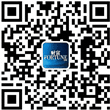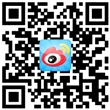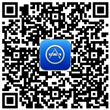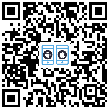小心,老板可能用这种方式监视你



|
周一,《每日电讯报》的记者们在上班时发现,公司安装了个人传感器,用于监视他们是否在岗。公司并未提前通知,也没有就这项措施进行任何解释。全体员工的抗议声迫使公司在当天下班时将这些传感器拆除。 二十多年来,监视员工举动一直是工作场所的常态。如果你登录计算机开始工作,认为自己没有被跟踪,那你可就大错特错了。本特利大学商业道德中心的一份调查发现,92%的美国公司设有道德行为官员,负责监控员工的电子邮件账户——这还是2002年的事情。 美国工作权利学会的里维斯?莫尔特比表示:“计算机监控可以追溯到20年前,而位置监控则是最近才出现的。” 据Buzzfeed报道,《每日电讯报》告诉员工,安装传感器的目的是收集“环境可持续性数据”。这确实是英国数据管理公司Cad-Capture推销监控设备时所宣传的用途之一。 Cad-Capture是一家利用数据帮助客户寻找办公空间的房地产咨询公司。在经济陷入衰退之后,一些公共部门客户希望降低房地产方面的支出,以应对政府的紧缩措施。于是,Cad-Capture就开发了一款名为OccupEye的监控设备。 Cad-Capture公司高级客户经理尼尔?斯蒂尔表示:“他们希望我们公司进行房地产使用率研究,以确定他们对物业的利用是否有效。”每个工作空间可以花费大约150美元购买一台OccupEye,也可以租用,每月租金约为22美元,这款设备利用热传感器和运动传感器确定一个空间是否有人使用。 斯蒂尔表示,自2012年上市以来,OccupEye的销量便开始“呈指数级”增长。2015年,该设备占到Cad-Capture公司业务的50%。 |
On Monday, journalists at The Daily Telegraph were welcomed to work by individual sensors that monitored when they were at their desks. The sensors appeared with no notice or explanation and prompted such an outcry from the Telegraph’s staff that the company decided to remove them by the day’s end. For more than two decades, employee monitoring has been a given in the workplace. If you log into a computer to do your job and think you’re not being tracked, you’re wrong. A survey by the Bentley College Center For Business Ethics found that 92% of American businesses with ethics officers monitor their employees’ email accounts—and that was in 2002. “Computer monitoring goes back 20 years,” says Lewis Maltby of the National Workrights Institute, “but location monitoring is much more recent.” The Telegraph told employees that the sensors were installed to collect “environmental sustainability data,” according to Buzzfeed. And that is indeed one of the purposes for which Cad-Capture, a United Kingdom-based data management company, markets its OccupEye monitoring devices. Cad-Capture is a real estate consultancy that uses data to help clients find office space. Its OccupEye device was developed in the wake of the recession, when Cad-Capture’s public sector clients wanted to reduce their real estate expenses in response to austerity measures. “They had an interest in having companies like ours conduct real estate utilization studies to determine if they were occupying their property efficiently,” says Neil Steele, a senior account manager at Cad-Capture. The OccupEye device, which costs about $150 per workspace to buy or approximately $22 per month to rent, uses heat and motion sensors to determine if a space is occupied. Since OccupEye launched in 2012, sales of the devices have grown “exponentially,” Steele says. In 2015, they made up 50% of Cad-Capture’s business. |

|
斯蒂尔表示,目前有数万台OccupEye设备为全世界数百家客户服务。这款设备可以向管理者实时反馈工作场所的使用情况,在采用“办公桌轮用制”的公司特别受欢迎。所谓办公桌轮用制是一种工作空间共享的作法,员工没有固定的工位,而是登记可用的办公桌。OccupEye系统可以为雇主和员工提供所有座位的地图,并用颜色代码标注无人使用的座位。大学也在利用这项技术,告知学生们可用的学习空间。 在被问及是否有客户有意利用这款设备调查员工的行踪或工作效率时,斯蒂尔回答说:“没有这样的客户。”他说道:“这是一款空间监测设备,它不是用来监控人的。” 但莫尔特比却对各公司使用这款设备的意图表示怀疑。他表示:“一项用于提高效率的工作技术最终沦为纪律整肃工具的例子不胜枚举,这不会是第一个。”他问道:“如果员工移动图表明,一名员工离开岗位的次数超过另外一名员工,公司会怎么做?”管理者会视而不见吗?莫尔特比表示:“有些情况下,公司或许不会理会,但并不尽然。” 虽然《每日电讯报》事件招致众怒,但OccupEye的侵略性其实远低于一些在售的跟踪设备。这款设备仅监控员工是否在工位上。有些监视设备则会对员工进行全天候监控。对于莫尔特比等职场权利倡议者来说,这些设备更值得担忧。例如,莫尔特比表示,越来越多的医院利用无线射频设备实时跟踪员工的位置,监视护士的移动情况。医院宣称,这些设备有助于改进护士的护理效率。但莫尔特比认为:“他们之所以需要跟踪每位护士的一举一动,首先是因为医院没有足够的护士。” 雇主通过某些工具,利用工作手机跟踪员工的作法,则更令人苦恼。对于雇主来说,跟踪某些员工是有道理的,比如送货司机,去见客户的销售人员等。技术调查公司阿伯丁集团2012年的一项研究显示,在设有这类“现场员工”的公司当中,有62%使用GPS进行跟踪,在2008年,这一比例仅有约30%。但不论工作日还是周末,不分白天黑夜地跟踪员工的手机,势必会引发一些问题。 这种全天候监视方式已经让一些公司惹上官司。一些员工起诉称,这种监控造成的隐私问题,“对于一个理智的人极具冒犯性。” 莫尔特比表示,目前尚没有针对这类跟踪的成文法,但法官可以根据普通法的隐私标准进行裁定。 在某些情况下,跟踪员工位置确实可以提高效率。例如,美国银行根据位置和语音跟踪所收集的数据,增加了客服中心员工相互沟通的时间。 但莫尔特比认为,一般而言,“一些公司认为,知道员工何时离开工位对雇主有利,这种观点其实并无直观的明显理由。”他表示,随着移动技术的普及,“你并非只有在工位上才能工作。假如有一种神奇的设备可以确定一名员工什么时候在工作或者没有工作,或许还值得为此花一大笔钱,可惜这样的设备并不存在。”(BT365的网址是多少) 译者:刘进龙/汪皓 审校:任文科 |
Steele says there are tens of thousands of OccupEye units in service at hundreds of clients worldwide. The devices, which provide administrators with a live feed of workplace occupancy, are especially popular among companies that employ “hot desking”—a workspace sharing practice in which employees don’t have a set workstation but log in at any desk that’s available. The OccupEye system can supply employers and their workers with a map of all seats and color code the ones that are free. Universities also use the technology to inform students of open study spaces. When asked if a client had ever expressed interest in using the devices to survey individual employees’ whereabouts or productivity, Steele answered, “No, none at all.” He said, “It’s all about the space, not about individuals.” Maltby is skeptical of companies’ intentions. “This wouldn’t be the first employment technology that was introduced for efficiency but became a disciplinary tool,” he says. “What’s going to happen when the traffic pattern shows that one employee is away more than another?” he asks. Is a manager just going to ignore that? “In some cases yes, in some cases no,” Maltby says. For all the outrage the Telegraph incident prompted, the invasiveness of OccupEye pales in comparison to some of the tracking technology that’s out there. It only monitors whether employees are at their desks. Other types of monitors that follow employees for the entire workday are more concerning to workplace rights advocates like Maltby. For instance, Maltby says hospitals are increasingly using radio frequency identification badges, which constantly track an employee’s location, to monitor the movement of their nurses. Hospitals promote the badges as a way to ensure efficient patient care. But “the reason they need to track every nurse every second of every shift is that there aren’t enough nurses to begin with,” Maltby says. More upsetting still are the tools employers use to track workers through their work cell phones. It makes sense for employers to track some employees, such as delivery drivers or sales staff who travel to clients. A 2012 study by Aberdeen Group, a technology research firm, reported that 62% of companies with such “field employees” tracked staff using GPS, up from about 30% in 2008. Problems arise, though, when employee cell phones are tracked at all hours, day or night, workday or weekend. That kind of 24/7 surveillance has led to lawsuits by workers who claim that the privacy implications of such monitoring are “highly offensive to a reasonable person.” Maltby says that there’s no statutory law against that kind of tracking, but judges could rule against it based on common law privacy standards. In some instances, employee location tracking can be used to improve productivity. Bank of America, for instance, used the data it collected from location and voice monitors to increase the time its call center employees spent talking to one another. But in general, Maltby says, “it’s not intuitively obvious why knowing every time an employee leaves [his or her] desk is of use to an employer.” Given the mobile technology available, “you don’t have to be be at your desk to work,” he says. “If there was some magic device that determined when an employee was working or not working, it’d be worth a lot of money, but such a device does not exist.” |
最新文章




